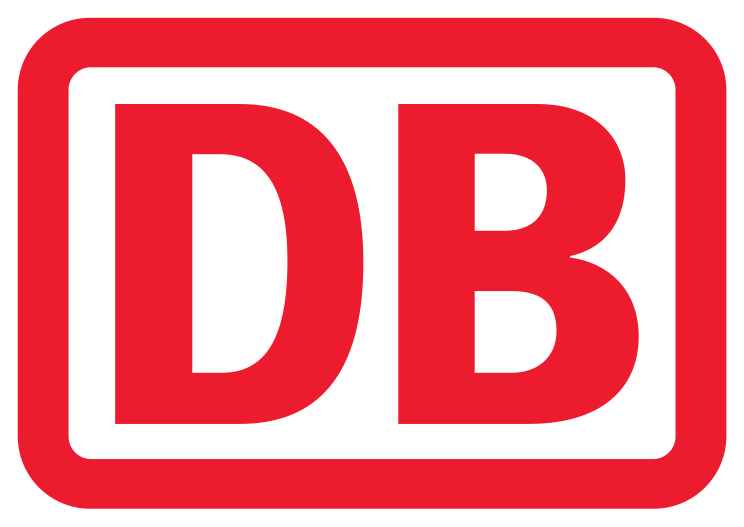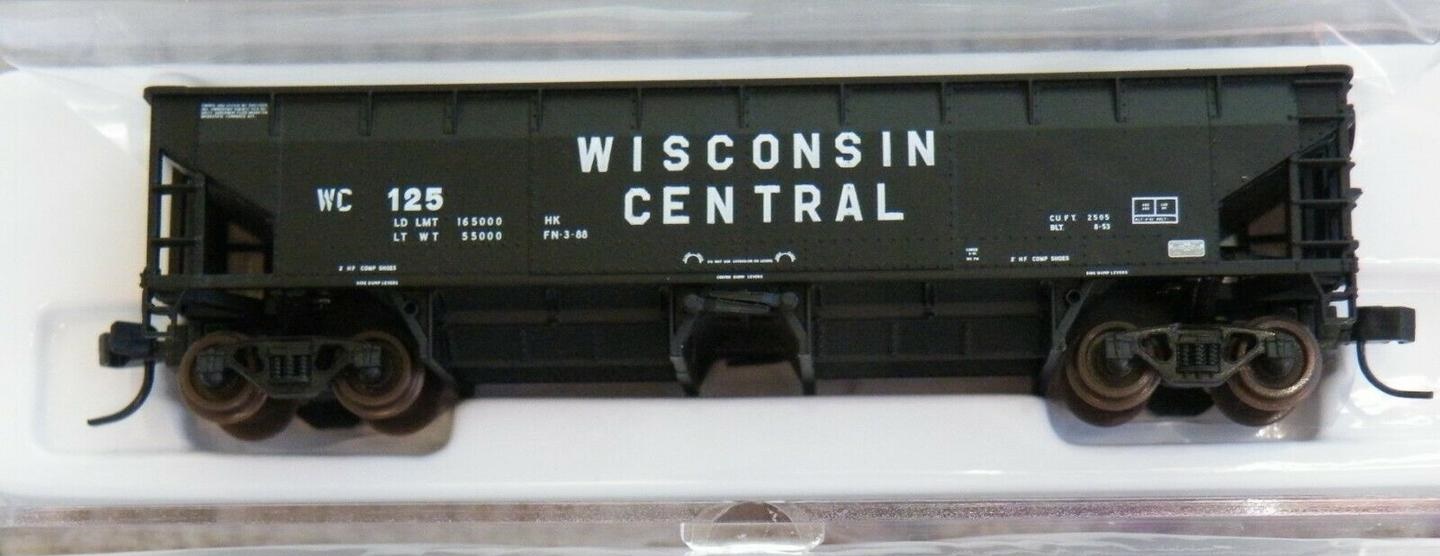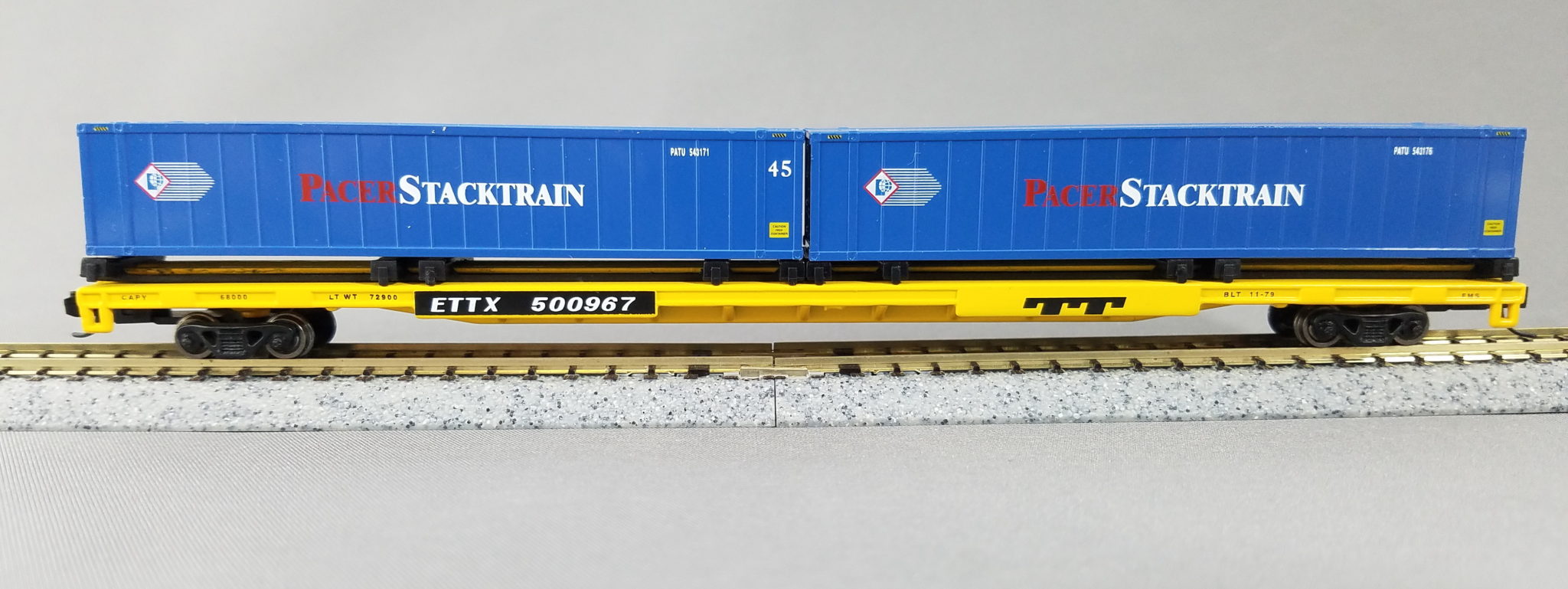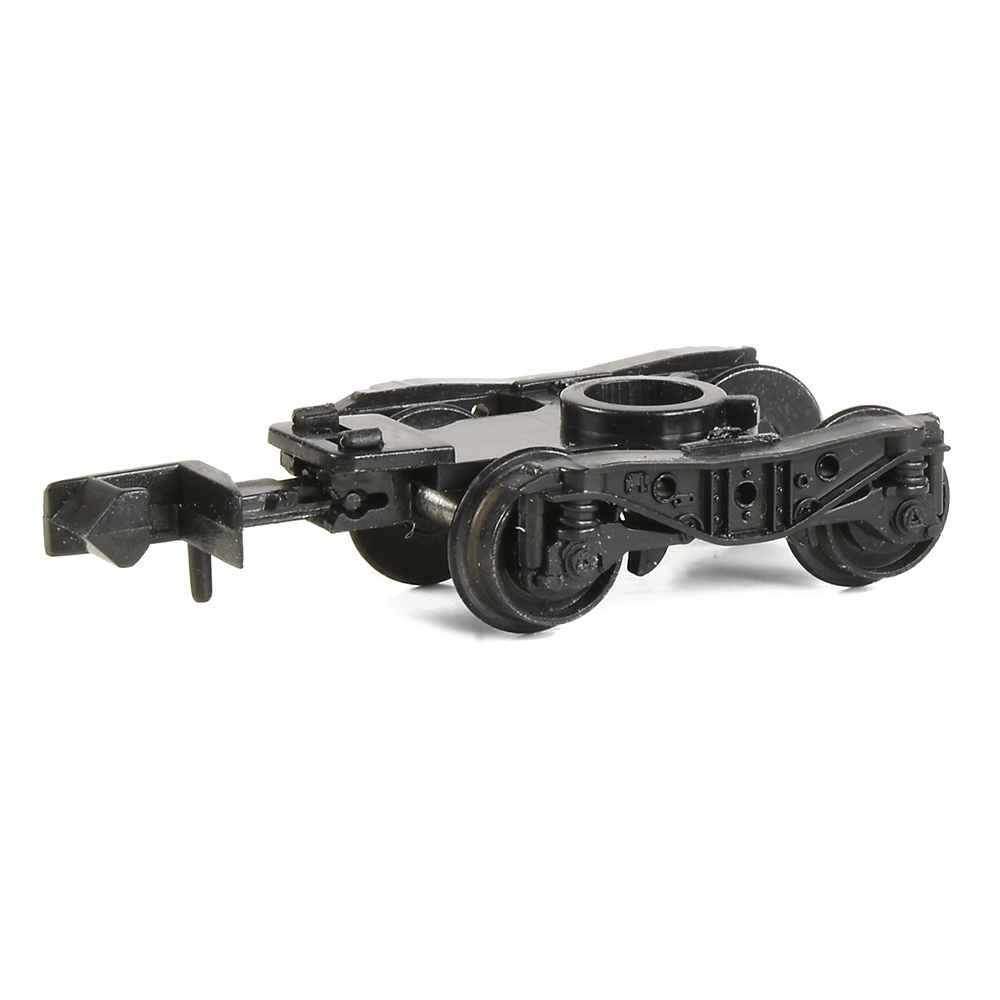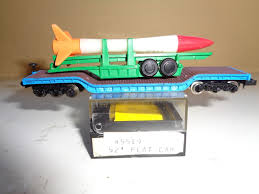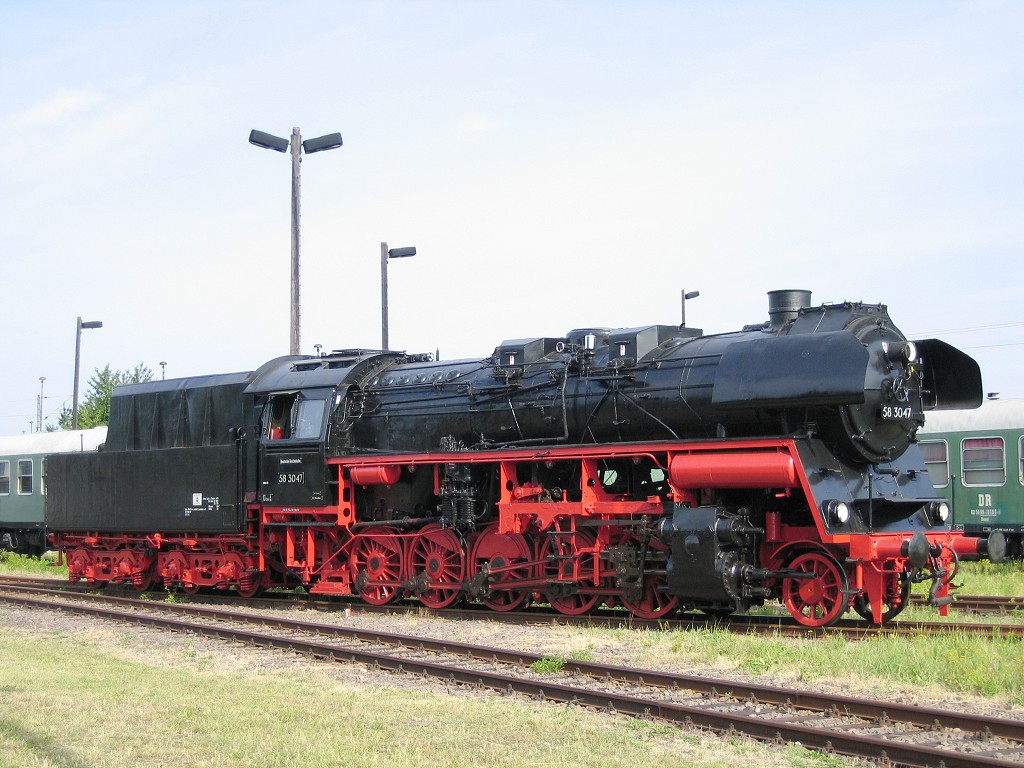Specific Item Information: Accepts NEM-651 Decoder.
Prototype History: After the Second World War, the Deutsche Reichsbahn in East Germany had a requirement for powerful goods train locomotives with a 15-18 tonne axle load for routes in the Mittelgebirge, the mountainous areas in the south of the country. As a result, the DR Class 58.30 emerged, as part of the so-called 'reconstruction programme', based on rebuilds of the former Prussian G 12 locomotives (later DRG Class 58.2-5, 10-21). Between 1958 and 1962, 56 locomotives, originally from various state railways (even several former Alsace locomotives) were converted at the former repair shop, RAW Zwickau.
As part of this rebuild, the engines were given welded driver's cabs, newly designed boilers (the Rekokessel) with combustion chambers, mixer-preheater systems, new welded cylinders, Trofimoff valves and Witte smoke deflectors. The reinforced Type 58E Rekokessel was a slightly modified Type 50E boiler, that was also installed on e.g. the Rekoloks of Class 50.35 and Class 52.80 as well as the DR Neubaulok, the DR Class 23.10. Due to the longer boiler, the frame also had to be extended. The distance between the carrying axle wheelset and the first coupled axle increased by around 300 mm and the overall wheelbase of the locomotive from 8,500 to 8,800 mm. That and other changes meant that the permitted top speed could be raised from 65 km/h to 70 km/h.
As part of this rebuild, the engines were given welded driver's cabs, newly designed boilers (the Rekokessel) with combustion chambers, mixer-preheater systems, new welded cylinders, Trofimoff valves and Witte smoke deflectors. The reinforced Type 58E Rekokessel was a slightly modified Type 50E boiler, that was also installed on e.g. the Rekoloks of Class 50.35 and Class 52.80 as well as the DR Neubaulok, the DR Class 23.10. Due to the longer boiler, the frame also had to be extended. The distance between the carrying axle wheelset and the first coupled axle increased by around 300 mm and the overall wheelbase of the locomotive from 8,500 to 8,800 mm. That and other changes meant that the permitted top speed could be raised from 65 km/h to 70 km/h.
Road Name History: Deutsche Bahn AG (abbreviated as DB, DB AG or DBAG) is a German railway company. Headquartered in Berlin, it is a private joint-stock company (AG), with the Federal Republic of Germany being its single shareholder. Deutsche Bahn describes itself as the second-largest transport company in the world, after the German postal and logistics company Deutsche Post / DHL, and is the largest railway operator and infrastructure owner in Europe. It carries about two billion passengers each year.
Deutsche Bahn (literally "German Railway" in German) came into existence in 1994 as the successor to the former state railways of Germany, the Deutsche Bundesbahn ("German Federal Railway") of West Germany and the Deutsche Reichsbahn ("German Empire Railway") of East Germany. It also gained ownership of former railway assets in West Berlin held by the Verwaltung des ehemaligen Reichsbahnvermögens (Administration of the Former Reichsbahn Assets).
Deutsche Bahn (literally "German Railway" in German) came into existence in 1994 as the successor to the former state railways of Germany, the Deutsche Bundesbahn ("German Federal Railway") of West Germany and the Deutsche Reichsbahn ("German Empire Railway") of East Germany. It also gained ownership of former railway assets in West Berlin held by the Verwaltung des ehemaligen Reichsbahnvermögens (Administration of the Former Reichsbahn Assets).
Brand/Importer Information: Trix is a German company that originally made Trix metal construction sets. one of its co-founders was Stephan Bing, the son of the pioneer toy-maker industrialist Ignaz Bing. In 1935 the company began producing the electrically powered model trains that it became famous for, under the Trix Express label. Prior to the outbreak of World War II the Trix company produced a small range of fairly unrealistic AC powered three rail models running at 14 volts.
N gauge models under the Minitrix brand were made from the late 1960s mostly of European prototypes (German and British primarily). North American prototypes were also manufactured and marketed under the Aurora "Postage Stamp" brand; later these items were sold under the American Tortoise, Model Power and Con-Cor brands. Trix sometimes utilized North American consultants to aid in the design of this portion of the product line. The "Hornby Minitrix' brand was used in the 1980s for a short lived range of British outline models using the earlier product tooling.
Trix's owner in the 1980s and 1990s was Mangold, which went bankrupt in the late 1990s and Märklin purchased the assets in January 1997. In part, this purchase was a reflection of Märklin's need for added production capacity; Trix had been manufacturing certain items for Märklin in previous years. The purchase was also in response to the earlier purchase of the Karl Arnold company by the Italian company Rivarossi; Märklin were very keen to take over Trix market share in 2-rail H0 and especially Minitrix, until then Märklin had not marketed N gauge models. In 2003, Märklin introduced its first N gauge models under the well established Minitrix brand. A number Märklin H0 scale three-rail AC locomotives have also been introduced in two-rail DC versions under the Trix logo and many models are shared between the two brands.
From Wikipedia
N gauge models under the Minitrix brand were made from the late 1960s mostly of European prototypes (German and British primarily). North American prototypes were also manufactured and marketed under the Aurora "Postage Stamp" brand; later these items were sold under the American Tortoise, Model Power and Con-Cor brands. Trix sometimes utilized North American consultants to aid in the design of this portion of the product line. The "Hornby Minitrix' brand was used in the 1980s for a short lived range of British outline models using the earlier product tooling.
Trix's owner in the 1980s and 1990s was Mangold, which went bankrupt in the late 1990s and Märklin purchased the assets in January 1997. In part, this purchase was a reflection of Märklin's need for added production capacity; Trix had been manufacturing certain items for Märklin in previous years. The purchase was also in response to the earlier purchase of the Karl Arnold company by the Italian company Rivarossi; Märklin were very keen to take over Trix market share in 2-rail H0 and especially Minitrix, until then Märklin had not marketed N gauge models. In 2003, Märklin introduced its first N gauge models under the well established Minitrix brand. A number Märklin H0 scale three-rail AC locomotives have also been introduced in two-rail DC versions under the Trix logo and many models are shared between the two brands.
From Wikipedia
Item created by: gdm on 2016-08-15 17:03:26. Last edited by gdm on 2019-05-19 15:54:01
If you see errors or missing data in this entry, please feel free to log in and edit it. Anyone with a Gmail account can log in instantly.
If you see errors or missing data in this entry, please feel free to log in and edit it. Anyone with a Gmail account can log in instantly.




